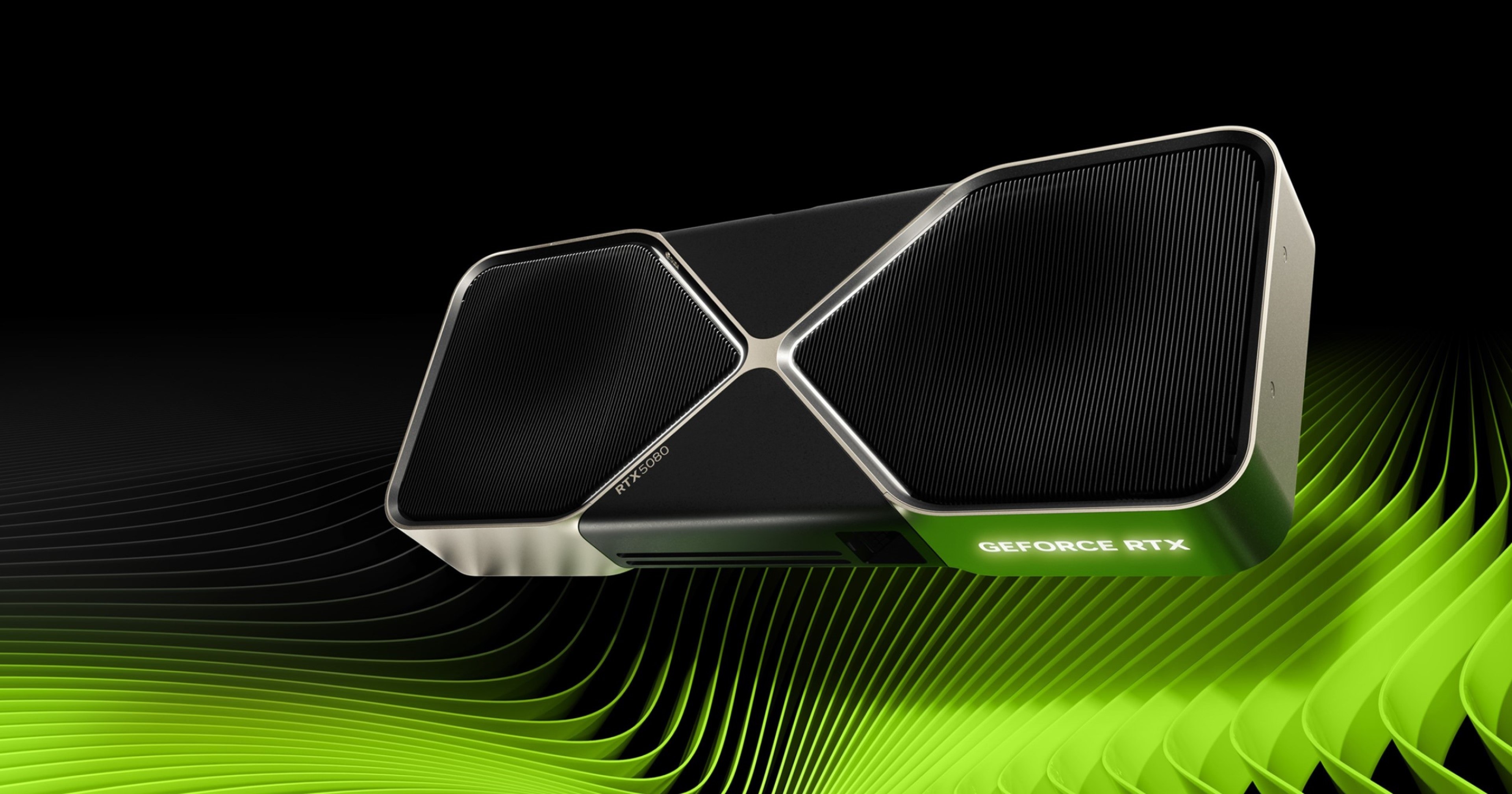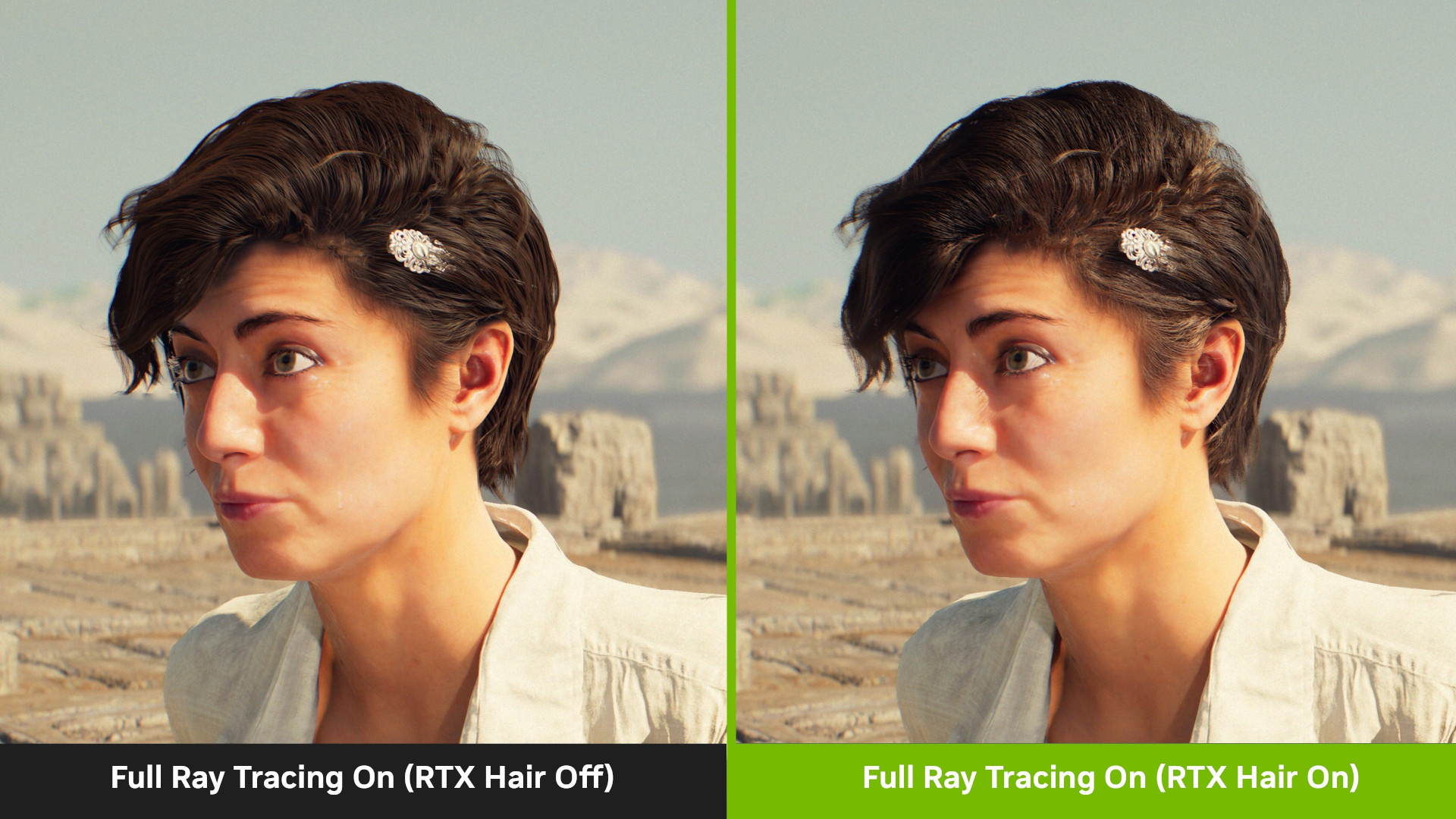
- Nvidia has detailed some clever new RTX Neural Shaders tech
- This includes Neural Texture Compression to fit more textures into VRAM
- It helps make sense of why Nvidia chose leaner video RAM loadouts with some RTX 5000 GPUs
Nvidia just unveiled its new RTX 5000 GPUs over at CES 2025, but alongside that revelation came a more under-the-radar – but still crucial – announcement about new tech to help speed up the gaming performance of these graphics cards.
Namely RTX Neural Shaders, which Nvidia describes as “small neural networks” (AI) which are being introduced to the programmable shaders on its next-gen GPUs. (A shader simply refers to a small GPU program that runs on a graphics card, not limited to facilitating shading or lighting effects in a game – but that’s the original derivation of the name).
Nvidia explains in a blog post: “RTX Neural Shaders SDK enables developers to train their game data and shader code on an RTX AI PC and accelerate their neural representations and model weights with Nvidia Tensor Cores at runtime.”
RTX Neural Shaders actually powers a trio of new technologies, but the secret weapon for the new RTX 5000 GPUs as far as VRAM is concerned – and there has been plenty of concern about the amount of on-board video memory being rather shaky – is RTX Neural Texture Compression.
In order to get more out of the available VRAM, RTX Neural Texture Compression uses compression (obviously enough) to fit more game textures into the RAM on the graphics card.
Here’s the key boast from Nvidia: “The neurally compressed textures save up to 7x more VRAM or system memory than traditional block compressed textures at the same visual quality.”
As well as this texture compression wizardry, Nvidia is also bringing in RTX Neural Materials. Team Green notes that this uses AI to “compress complex shader code typically reserved for offline materials and built with multiple layers such as porcelain and silk.” The claim is 5x faster material processing which makes it “possible to render film-quality assets at game-ready frame rates.”
Finally, the third piece of the puzzle here is RTX Neural Radiance Cache which is a method of using AI to improve ray tracing performance (specifically it gives gamers “better path traced indirect lighting and performance”).
Analysis: Hair today, RTX Hair tomorrow (and much more besides)
As ever, take any press announcement with a good deal of caution, but the mentioned performance boost with the texture compression trick for RTX 5000 graphics cards is potentially huge.
When the 12GB loadout of video RAM for the RTX 5070, and 16GB configuration for the RTX 5080, were aired via the rumor mill some time back, as well as the stinging sense of disappointment that Nvidia was ‘once again skimping on VRAM,’ there was an undercurrent of speculation that the RTX 5000 series could come with some special sauce to better fit textures into the available memory on the next-gen graphics cards.
And that’s exactly what has happened, meaning that while 12GB sounds like a meager allocation for the RTX 5070, it’ll go a lot further thanks to RTX Neural Texture Compression. The catch, of course, is that game developers must use the technology – and 12GB still looks a little shaky in terms of future-proofing, for me anyway.
We’ll also need to test the performance of this AI-driven texture compression and compare the results to Nvidia’s lofty claims, too – but it sounds very promising indeed. And of course it does help make sense of Nvidia’s VRAM decisions, too.

All this comes along with a bunch of other fresh tricks for the RTX 5000 generation, including RTX Neural Faces and the RTX Character Rendering SDK for improved face, hair and skin graphics. Indiana Jones and the Great Circle is getting an update delivering RTX Hair (yes, that’s really its name) which uses “Linear-Swept Sphere rendering [to run] faster, with improved image quality, whilst using less VRAM” compared to past hair rendering methods. (Check out the results in the above image).
That game will also be one of the many titles to benefit from DLSS 4, which is, of course, a key piece of the software side for RTX 5000 GPUs. It includes DLSS Multi Frame Generation (MFG) to further drive frame rates higher by inserting more artificial frames compared to DLSS 3 Frame Generation. (Also note that Nvidia is bringing in Reflex 2 for more input lag reduction – of up to a claimed 75% now – to go alongside MFG and mitigate any added latency therein).
Nvidia also told us that there will be 75 games and apps supporting DLSS 4’s MFG capability when its Blackwell graphics cards are launched at the end of January (the RTX 5090 and 5080 to begin with), a hefty initial helping for buyers of the new GPUs (RTX 5070 models are to follow in February).
It’s worth noting that RTX 4000 owners also get something here in the form of enhanced DLSS frame generation with boosted performance and reduced memory usage – but this isn’t MFG, which is exclusive to the new Blackwell GPUs.
Via Neowin
TechRadar will be extensively covering this year's CES, and will bring you all of the big announcements as they happen. Head over to our CES 2025 news page for the latest stories and our hands-on verdicts on everything from 8K TVs and foldable displays to new phones, laptops, smart home gadgets, and the latest in AI.
And don’t forget to follow us on TikTok and WhatsApp for the latest from the CES show floor!







